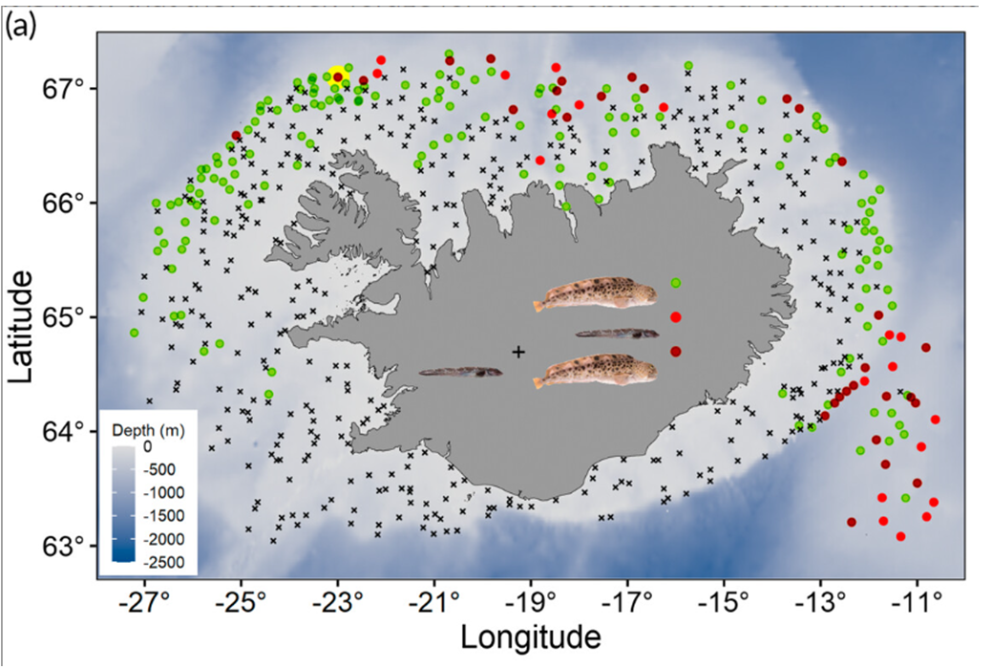- Research
- Fish tagging
- Lumpfish research
- Oceanography
- Seabed mapping
- Arnarfjörður
- Drekasvæði
- Ísafjarðardjúp
- Jökulbanki
- Jökuldjúp
- Kolbeinseyjarhryggur and adjacent area
- Kolluáll
- Langanesgrunn
- Látragrunn
- Nesdjúp
- Reykjaneshryggur and adjacent area
- Selvogsbanki
- South of Selvogsbanki
- South of Skeiðarárdjúp
- South of Skerjadjúp
- Southeast of Lónsdjúp
- Southwest of Jökuldjúp
- Suðausturmið
- Suðurdjúp
- Vesturdjúp
- East of Reykjaneshryggur
- Vestfjardarmid
- Seal research
- Whale Research
- Advice
- About
Spotted wolffish reveals nesting behaviour in greater eelpout
17. February 2024
 When examining the stomach contents of spotted wolffish, reported in a new article published in Journal of Fish Biology recently, it was discovered that it had consumed more than 700 fish larvae, which were identified as greater eelpout (Lycodes esmarkii).
When examining the stomach contents of spotted wolffish, reported in a new article published in Journal of Fish Biology recently, it was discovered that it had consumed more than 700 fish larvae, which were identified as greater eelpout (Lycodes esmarkii).
Spotted wolffish reveals nesting behaviour in greater eelpout
When examining the stomach contents of spotted wolffish, reported in a new article published in Journal of Fish Biology recently, researchers at MFRI discovered that it had consumed more than 700 fish larvae, which were identified as greater eelpout (Lycodes esmarkii).
This study confirms that with so many larvae consumed at once, and at a similar state of digestion, that they were all together in a nest and that the nesting behaviour was suspected of greater eelpout. The study also demonstrates that spotted wolffish will predate the nests of other fish.
There is still a poor understanding of the feeding behaviour of spotted wolffish, and the extent of predation on the nests of other fish species is unknown. There is also an underappreciation of the role played within the marine ecosystem by zoarcids, which are relatively common in northern latitudes, but poorly studied. The nests of zoarcids are clearly a target for spotted wolffish, and likely other fishes, so information on the spatial distribution of their spawning grounds could help understand the distribution and feeding ecology of their predators.
The study was carried out by three researchers at the Marine and Freshwater Research Institute, James Kennedy, Ásgeir Gunnarsson, Christophe Pampoulie along with Rupert Wienerroither from the Institute of Marine Research in Norway .
